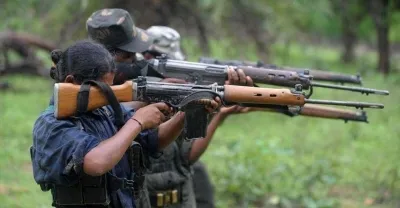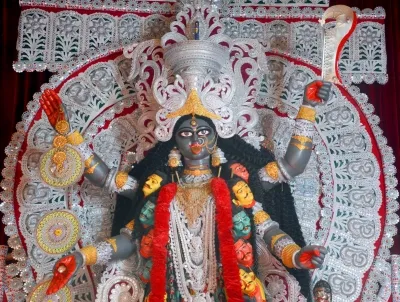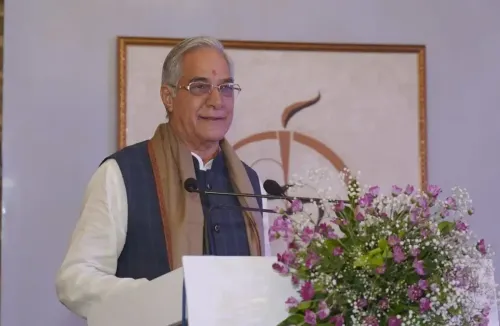Is the Naxalite Movement on the Brink of Collapse Before 2026?

Synopsis
Key Takeaways
- Upcoming deadline: The Naxalite movement faces a deadline of March 31, 2026.
- Surge in surrenders: Over 300 Naxalites have surrendered recently, indicating a possible shift in the movement.
- Weak leadership: Remaining leaders are struggling with internal dissent and external pressure.
- Operational focus: Security forces are honing in on key battalions to dismantle the remaining structure.
- Government resolve: The Modi administration’s commitment is pivotal in addressing the Naxalite threat.
New Delhi, Oct 20 (NationPress) The Naxalite movement is set to face its end by March 31, 2026. However, recent surrenders suggest that this insurgency could conclude by January 2026, coinciding with Republic Day.
Security forces have established a dominant position, and it is anticipated that any remaining Naxalites unwilling to surrender will be neutralized by January next year. The concluding phase of this battle appears manageable for security agencies as operational areas have significantly reduced, allowing for more targeted actions.
The regions predominantly affected by this unrest are Bijapur, Sukma, and Narayanpur in Chhattisgarh. In contrast, areas like Gariaband, Kanker, and Dantewada see a minimal presence of Maoists, indicating a potential for more surrenders.
In just three days, approximately 300 Naxalites have surrendered alongside their weapons. Despite a significant number being neutralized by security forces, many have opted to surrender. A pivotal moment was marked by the surrender of Venugopal alias Bhupati, a prominent Naxalite leader responsible for orchestrating numerous attacks on security personnel. His decision highlighted internal discontent within the movement.
Venugopal addressed his followers in a letter, stating the futility of continuing the struggle. He articulated, "If we do not surrender, we will be overwhelmed by the security forces, and the best option is to give up arms and surrender."
Currently, only three major leaders remain: Misir Bear, Thippari Tirupati, and Ganpati. Estimates suggest the remaining Naxalites number between 250 to 300, yet their resolve is waning. They face weak leadership, a shortage of arms, and a lack of ideological motivation.
The remaining Naxalites are primarily focused on safeguarding their leadership rather than engaging with security forces, recognizing the high risk of being eliminated. Officials predict that many will likely surrender, realizing that resistance is futile after Venugopal's capitulation.
The attention is on a battalion operating near the Chhattisgarh-Telangana border, which is the largest remaining group of Naxalites. Officials believe that dismantling this battalion could lead to a wave of subsequent surrenders.
Union Minister for Coal and Mines, G Kishan Reddy, remarked that the surge in surrenders reflects growing confidence in the government’s commitment to restoring stability in previously neglected districts. He credited the decisive actions of the Narendra Modi administration for the progress against the Naxalites.
While the Naxalite movement appears to be dwindling faster than anticipated, intelligence agencies are monitoring sympathizers in urban areas to ensure that the ideology does not persist. Although remnants may attempt to resurface, experts believe that sustaining traction will be challenging, according to an Intelligence Bureau official.









